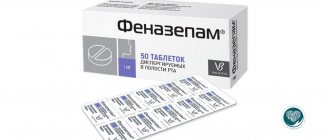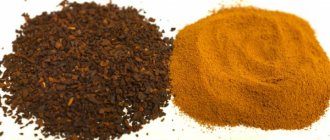| Alkalosis, , blood pH, body pH, urine pH, urine pH measurement, saliva pH, acidification of the body, acidity of the body, acidosis |
Maintaining acid-base balance in the body is very important for the normal functioning of all internal human systems. The pH level determines the optimal activity of all enzymes involved in metabolism.
When the balance of acids and alkalis is disturbed, the activity of enzymes decreases, metabolism is disrupted, which is why toxins begin to accumulate in the body. Therefore, the first stage of cleansing the body of toxins is restoring the pH balance.
The lifestyle of a modern person often leads to disturbances in the acid-base balance in the body. Most often, people suffer from increased levels of acidity - acidosis . This is caused by modern lifestyle.
An increase in the acidity of the body is caused by a lack of diet and a decrease in physical activity, stress, strict diets, alcohol abuse and smoking.
Acidosis is now much more common than excess alkali - alkalosis.
What is pH
The two-letter abbreviation originates in Latin. It stands for “hydrogen power” and means a measure of the activity of charged particles of a given element. To calculate the pH value, the concentration of hydrogen ions is measured. Then the decimal logarithm is taken from the resulting number and multiplied by (-1). The mathematical formula looks like this: pH = -log[H+].
Essentially, the hydrogen index is the ratio of H+ and OH– ions in a liquid, which are formed during the breakdown of water molecules. The ideal ratio is 1:1, i.e. pH=7. Distilled water has this value.
The value of the indicator is directly related to the temperature of the water and its interaction with air. If the pH in a closed vessel is 7, then as carbon dioxide enters the liquid, the value will drop to 5.2.
The pH value is also affected by substances that dissolve in water. The addition of some substances increases acidity, while others decrease it. This phenomenon allows you to evaluate the purity of a liquid, even when visually it does not have impurities.
pH standards for drinking water
The limits of permissible values of the hydrogen index are determined by SanPiN 2.1.4.1074-01 “Drinking water”. According to this document, the pH level of drinking water from the tap should not go beyond 6-9 points.
However, scientists set stricter limits: from 6.5 to 8.5. This is due to the neutrality of human blood: it is believed that water with a similar indicator value is most favorable for humans. Ideally, the drink should have a pH of 7.5. This water has a beneficial effect on metabolic processes in the human body. And it is precisely because of this that after sweet soda, an unpleasant dryness remains in the mouth: chemical impurities in such a drink lower the pH of the body.
pH values of various drinks
Water with a low pH value, that is, acidic, can be used for washing (it effectively removes impurities from the surface of the body). Alkaline water with more than 7-9 points improves the condition of the body (if you do not abuse it).
To always drink water with a healthy pH value, it is recommended to use a drinking water filter system (such as reverse osmosis under the kitchen sink).
You can purchase such equipment in the online store.
The pH value of bottled water is usually indicated on the label. Thanks to this, choosing the right bottle in the store is not difficult.
Acidity (pH)
Acidity
(lat.
aciditas
) - a characteristic of the activity of hydrogen ions in solutions and liquids. In medicine, the acidity of biological fluids (blood, urine, gastric juice and others) is a diagnostically important parameter of the patient’s health status. In gastroenterology, for the correct diagnosis of a number of diseases, for example, the esophagus and stomach, a one-time or even average acidity value is not significant. Most often, it is important to understand the dynamics of changes in acidity during the day (night acidity often differs from daytime) in several zones of the organ. Sometimes it is important to know the change in acidity as a reaction to certain irritants and stimulants.
Content
- pH value
- Some misconceptions
- pH value for some foods and water
- Acidity and Digestive Enzymes
- Acidity of saliva and oral cavity
- Acidity of the secretion of the pharynx and larynx
- Acidity in the esophagus
- Acidity in the stomach. High and low acidity
- Acidity in the intestines
- Stool acidity
- Blood acidity
- Acidity of urine
- Acidity of the vagina, cervical canal and uterine cavity
- Publications for healthcare professionals addressing the issue of acidity in the female genital organs
- Sperm acidity
- Skin acidity
- Acidity of other human biological fluids
- Publications for healthcare professionals addressing the issue of acidity in the digestive system
- Measures and standards of acidity
pH value
In solutions, inorganic substances: salts, acids and alkalis are separated into their constituent ions. In this case, hydrogen ions H+ are carriers of acidic properties, and OH− ions are carriers of alkaline properties. In highly dilute solutions, the acidic and alkaline properties depend on the concentrations of H+ and OH− ions. In ordinary solutions, acidic and alkaline properties depend on the activities of the aH and aOH ions, that is, on the same concentrations, but adjusted for the activity coefficient γ, which is determined experimentally. For aqueous solutions, the equilibrium equation applies: аН × аОН = Кw, where Кw is a constant, the ionic product of water (Кw = 10−14 at a water temperature of 22 °C). From this equation it follows that the activity of hydrogen ions H+ and the activity of OH− ions are interconnected. Danish biochemist S.P.L. In 1909, Sørensen proposed to show the hydrogen pH
, equal by definition to the decimal logarithm of the activity of hydrogen ions, taken with a minus (Rapoport S.I. et al.):
pH = - log (a H)
.
Based on the fact that in a neutral environment aH = aON and from the equality for pure water at 22 °C: aH× aON = Kw = 10−14, we obtain that the acidity of pure water at 22 °C (that is, neutral acidity) = 7 units pH.
Solutions and liquids with respect to their acidity are considered:
- neutral at pH = 7
- acidic at pH < 7
- alkaline at pH > 7
Some misconceptions
If one of the patients says that he has “zero acidity,” then this is nothing more than a turn of phrase, meaning, most likely, that he has a neutral acidity value (pH = 7).
In the human body, the acidity value cannot be less than 0.86 pH. It is also a common misconception that acidity values can only range from 0 to 14 pH. In technology, the acidity indicator can be negative or greater than 20. When talking about the acidity of an organ, it is important to understand that acidity can often differ significantly in different parts of the organ. The acidity of the contents in the lumen of the organ and the acidity on the surface of the mucous membrane of the organ are also often not the same. It is typical for the mucous membrane of the body of the stomach that the acidity on the surface of the mucus facing the lumen of the stomach is 1.2–1.5 pH, and on the side of the mucus facing the epithelium it is neutral (7.0 pH).
pH value for some foods and water
The table below shows the acidity values of some common foods and pure water at different temperatures:
| Product | Acidity, units pH |
| Lemon juice | 2,1 |
| Wine | 3,5 |
| Tomato juice | 4,1 |
| Orange juice | 4,2 |
| Black coffee | 5,0 |
| Pure water at 100 °C | 6,13 |
| Pure water at 50 °C | 6,63 |
| Fresh milk | 6,68 |
| Pure water at 22 °C | 7,0 |
| Pure water at 0°C | 7,48 |
Acidity and Digestive Enzymes
Many processes in the body are impossible without the participation of special proteins - enzymes, which catalyze chemical reactions in the body without undergoing chemical transformations.
The digestive process is not possible without the participation of a variety of digestive enzymes, which break down various organic food molecules and act only in a narrow range of acidity (different for each enzyme). The most important proteolytic enzymes (breaking down food proteins) of gastric juice: pepsin, gastrixin and chymosin (rennin) are produced in an inactive form - in the form of proenzymes and are later activated by hydrochloric acid of gastric juice. Pepsin is most active in a strongly acidic environment, with a pH of 1 to 2, gastrixin has maximum activity at pH 3.0–3.5, chymosin, which breaks down milk proteins into insoluble casein protein, has maximum activity at pH 3.0–3.5 . Proteolytic enzymes secreted by the pancreas and “acting” in the duodenum: trypsin has an optimum action in a slightly alkaline environment, at pH 7.8–8.0; chymotrypsin, which is close to it in functionality, is most active in an environment with an acidity of up to 8.2. The maximum activity of carboxypeptidases A and B is 7.5 pH. Similar maximum values are found for other enzymes that perform digestive functions in the slightly alkaline environment of the intestine.
Reduced or increased acidity relative to the norm in the stomach or duodenum, thus, leads to a significant decrease in the activity of certain enzymes or even their exclusion from the digestive process, and, as a consequence, to digestive problems.
Acidity of saliva and oral cavity
The acidity of saliva depends on the rate of salivation.
Typically, the acidity of mixed human saliva is 6.8–7.4 pH, but with high salivation rates it reaches 7.8 pH. The acidity of the saliva of the parotid glands is 5.81 pH, of the submandibular glands - 6.39 pH. In children, on average, the acidity of mixed saliva is 7.32 pH, in adults - 6.40 pH (Rimarchuk G.V. et al.).
Acid gastroesophageal and pharyngolaryngeal refluxes reaching the oral cavity play a leading role in the occurrence of oral pathology. As a result of the ingress of hydrochloric acid, the acidity of mixed saliva decreases below 7.0 pH. Saliva, normally enriched with calcium, phosphates, containing carbonates, sodium, potassium, magnesium and having alkaline properties, at low pH, especially at values of 6.2–6.0, leads to focal demineralization of tooth enamel with the appearance of erosions of hard dental tissues and the formation of cavities in them - caries (Novikova V.P., Shabanov A.M.).
The acidity of dental plaque depends on the condition of the hard tissues of the teeth. Being neutral in healthy teeth, it shifts to the acidic side, depending on the degree of development of caries and the age of adolescents. In 12-year-old adolescents with the initial stage of caries (precaries), the acidity of dental plaque is 6.96 ± 0.1 pH, in 12–13-year-old adolescents with average caries, the acidity of dental plaque is from 6.63 to 6.74 pH, in 16 -year-old adolescents with superficial and medium caries, the acidity of dental plaque is, respectively, 6.43 ± 0.1 pH and 6.32 ± 0.1 pH (Krivonogova L.B.).
Acidity of the secretion of the pharynx and larynx
The acidity of the secretion of the pharynx and larynx in healthy people and patients with chronic laryngitis and pharyngolaryngeal reflux is different (A.V. Lunev):
| Groups of surveyed | pH measurement location | |
| Pharynx , units pH | Larynx , units pH | |
| Healthy faces | 6,5 | 6,5 |
| Patients with chronic laryngitis without GERD | 5,6 | 5,6 |
| Patients with pharyngolaryngeal reflux | 4,9 | 4,9 |
| Patients with GERD without pharyngolaryngeal reflux | 5,2 | 5,2 |
The average pH value of the secretion of the pharynx and larynx within the groups does not have significant differences. In patients, when compared with a group of healthy individuals, the acidity of the secretions of the pharynx and larynx is higher (i.e., the pH is lower).
Acidity in the esophagus
Normal acidity in the esophagus is 6.0–7.0 pH. In addition to food and consumed liquid, the esophagus periodically receives saliva, which has neutral and slightly alkaline acidity, as well as refluxate, which is thrown from the stomach by gastroesophageal reflux. More often, refluxate has an acidity corresponding to the acidity of the stomach. Therefore, while gastric refluxate is in the esophagus, the acidity of the latter increases, the pH value decreases to 1.5–2. If there are relatively few gastroesophageal refluxes, they are considered physiological and do not affect the condition of the esophagus. Otherwise, refluxate may irritate the esophageal epithelium and develop gastroesophageal reflux disease.
The figure above shows a graph of acidity in the esophagus of a healthy person, obtained using intragastric pH-metry (Rapoport S.I.). The graph clearly shows gastroesophageal refluxes - sharp decreases in acidity to 2-3 pH, which in this case are physiological.
Acidity in the stomach. High and low acidity
The maximum observed acidity in the stomach is 0.86 pH, which corresponds to an acid production of 160 mmol/l.
The minimum acidity in the stomach is 8.3 pH, which corresponds to the acidity of a saturated solution of HCO3- ions. Normal acidity in the lumen of the body of the stomach on an empty stomach is 1.5–2.0 pH. The acidity on the surface of the epithelial layer facing the lumen of the stomach is 1.5–2.0 pH. The acidity in the depths of the epithelial layer of the stomach is about 7.0 pH. Normal acidity in the antrum of the stomach is 1.3–7.4 pH. The cause of many diseases of the digestive tract is an imbalance in the processes of acid production and acid neutralization. Long-term hypersecretion of hydrochloric acid or lack of acid neutralization, and, as a consequence, increased acidity in the stomach and/or duodenum, causes so-called acid-dependent diseases. Currently, these include: peptic ulcer of the stomach and duodenum, gastroesophageal reflux disease (GERD), erosive and ulcerative lesions of the stomach and duodenum while taking aspirin or non-steroidal anti-inflammatory drugs (NSAIDs), Zollinger-Ellison syndrome, gastritis and gastroduodenitis with high acidity and others.
Reduced acidity is observed with anacid or hypoacid gastritis or gastroduodenitis, as well as with stomach cancer. Gastritis (gastroduodenitis) is called anacid or gastritis (gastroduodenitis) with low acidity if the acidity in the body of the stomach is approximately 5 units or more. pH. The cause of low acidity is often atrophy of parietal cells in the mucous membrane or disturbances in their functions.
Above is a graph of the acidity (daily pH gram) of the body of the stomach of a healthy person (dashed line) and a patient with a duodenal ulcer (solid line). Moments of eating are marked with arrows labeled “Food”. The graph shows the acid-neutralizing effect of food, as well as increased stomach acidity with duodenal ulcer (Yakovenko A.V.).
Acidity in the intestines
Normal acidity in the duodenal bulb is 5.6–7.9 pH.
The acidity in the jejunum and ileum is neutral or slightly alkaline and ranges from 7 to 8 pH. The acidity of small intestine juice is 7.2–7.5 pH. With increased secretion it reaches 8.6 pH. The acidity of the secretion of the duodenal glands is from pH 7 to 8 pH. The acidity of colon juice is 8.5–9.0 pH.
In the lower parts of the colon, pH values of acidity gradually increase, reaching a maximum pH value in the region of the rectosigmoid junction. The following table shows the acidity in the sigmoid and rectum of a healthy person, obtained by targeted endoscopic pH-metry (Churkin I.A.):
| Measuring point | Point number in the figure | Acidity, units pH |
| Proximal sigmoid colon | 7 | 7,9±0,1 |
| Middle sigmoid colon | 6 | 7,9±0,1 |
| Distal sigmoid colon | 5 | 8,7±0,1 |
| Supraampullary rectum | 4 | 8,7±0,1 |
| Upper ampullary rectum | 3 | 8,5±0,1 |
| Mid-ampullary rectum | 2 | 7,7±0,1 |
| Inferior ampullary rectum | 1 | 7,3±0,1 |
Stool acidity
The acidity of the feces of a healthy person eating a mixed diet is determined by the vital activity of the colon microflora and is equal to 6.8–7.6 pH. Stool acidity is considered normal in the range from 6.0 to 8.0 pH. The acidity of meconium (original feces of newborns) is about 6 pH. Deviations from the norm for stool acidity:
- sharply acidic (pH less than 5.5) occurs with fermentative dyspepsia
- acidic (pH from 5.5 to 6.7) may be due to impaired absorption of fatty acids in the small intestine
- alkaline (pH from 8.0 to 8.5) may be due to the rotting of food proteins not digested in the stomach and small intestine and inflammatory exudate as a result of activation of putrefactive microflora and the formation of ammonia and other alkaline components in the large intestine
- sharply alkaline (pH more than 8.5) occurs with putrefactive dyspepsia (colitis)
Blood acidity
The acidity of human arterial blood plasma ranges from 7.37 to 7.43 pH, averaging 7.4 pH.
The acid-base balance in human blood is one of the most stable parameters, maintaining acidic and alkaline components in a certain balance within very narrow limits. Even a small shift from these limits can lead to severe pathology. When shifting to the acidic side, a condition called acidosis occurs, and to the alkaline side, alkolosis occurs. A change in blood acidity above 7.8 pH or below 6.8 pH is incompatible with life. The acidity of venous blood is 7.32–7.42 pH. The acidity of red blood cells is 7.28–7.29 pH.
Acidity of urine
In a healthy person with a normal drinking regime and a balanced diet, the acidity of urine is in the range from 5.0 to 6.0 pH, but can range from 4.5 to 8.0 pH.
The acidity of the urine of a newborn under the age of one month is normal - from 5.0 to 7.0 pH. The acidity of urine increases if a person’s diet is dominated by meat foods rich in proteins. Heavy physical work increases the acidity of urine. A dairy-vegetable diet causes urine to become slightly alkaline. Increased acidity of urine is observed with increased acidity of the stomach. Reduced acidity of gastric juice does not affect the acidity of urine. A change in urine acidity most often corresponds to a change in blood acidity. The acidity of urine changes with many diseases or conditions of the body, so determining the acidity of urine is an important diagnostic factor.
Under normal conditions, in a healthy person, the urine reaction is slightly acidic, the pH fluctuates depending on the diet between 4.5 and 8. With protein-rich foods, urine usually gives an acidic reaction, and with plant foods, an alkaline reaction. When diphosphates are released, a slightly alkaline reaction is observed. Under pathological conditions, urine can also give a strongly alkaline reaction, and in this case it is usually cloudy. With respiratory alkalosis (hyperventilation) or metabolic alkalosis, loss of acids with gastric juice, and a decrease in the amount of potassium in the blood, the urine reaction becomes alkaline. An acidic urine reaction is observed during fasting, severe diarrhea, acidosis, or after ingestion of acidifying drugs (ammonium chloride). Research is carried out only with freshly released urine. The easiest way to conduct research is with blue and red litmus paper. Acidic urine changes the litmus color from blue to red, and alkaline urine changes the litmus color from red to blue. The true reaction of urine is better determined by universal indicator paper with a range from 1-14 (Ishmanov M.Yu. et al.).
Acidity of the vagina, cervical canal and uterine cavity
The normal acidity of a woman's vagina ranges from 3.8 to 4.4 pH and averages 4.0 to 4.2 pH. Vaginal acidity in various diseases:
- cytolytic vaginosis: acidity less than 4.0 pH
- normal microflora: acidity from 4.0 to 4.5 pH
- candidal vaginitis: acidity from 4.0 to 4.5 pH
- Trichomonas colpitis: acidity from 5.0 to 6.0 pH
- bacterial vaginosis: acidity greater than 4.5 pH
- atrophic vaginitis: acidity greater than 6.0 pH
- aerobic vaginitis: acidity greater than 6.5 pH
Lactobacilli (lactobacillus) and, to a lesser extent, other representatives of normal microflora are responsible for maintaining an acidic environment and suppressing the growth of opportunistic microorganisms in the vagina.
In the treatment of many gynecological diseases, restoration of the lactobacilli population and normal acidity comes to the fore. According to Ivshin V.G. et al. (2020) in the area of the external pharynx the environment is acidic: pH = 6.42 ± 0.026. Along the course of the cervical canal, the pH value gradually increases. In the area of the internal pharynx, the pH value approaches neutral: 6.96 ± 0.013. As the sensor moves into the uterine cavity, a gradual increase in pH is observed from 7.14 ± 0.11 to 7.19 ± 0.11. On the mucous membrane of the uterine fundus, the environment is slightly alkaline: pH = 7.22 ± 0.007.
Publications for healthcare professionals addressing the issue of acidity in the female genital organs
- Murtazina Z.A., Yashchuk G.A., Galimov R.R., Dautova L.A., Tsvetkova A.V. Office diagnostics of bacterial vaginosis using hardware topographic pH-metry. Russian Bulletin of Obstetrician-Gynecologist. 2017;17(4): 54-58.
- Yashchuk A.G., Galimov R.R., Murtazina Z.A. A method for express diagnostics of disorders of vaginal biocenosis using hardware topographic pH-metry. Patent RU 2651037 C1.
- Gasanova M.K. Modern approaches to the diagnosis and treatment of serozometra in postmenopause. Abstract of dissertation. PhD, 14.00.01 - obstetrics and gynecology. RMAPO, Moscow, 2008.
Sperm acidity
The normal acidity level of sperm is between 7.2 and 8.0 pH. Deviations from these values are not in themselves considered pathology. At the same time, in combination with other deviations, it may indicate the presence of a disease. An increase in the pH level of sperm occurs during an infectious process. A sharply alkaline reaction of sperm (acidity approximately 9.0–10.0 pH) indicates prostate pathology. When the excretory ducts of both seminal vesicles are blocked, an acidic reaction of the sperm is observed (acidity 6.0–6.8 pH). The fertilizing ability of such sperm is reduced. In an acidic environment, sperm lose motility and die. If the acidity of the seminal fluid becomes less than 6.0 pH, the sperm completely lose their motility and die.
Skin acidity
The surface of the skin is covered with a water-lipid acid mantle
or
Marchionini mantle
, consisting of a mixture of sebum and sweat, to which organic acids are added - lactic, citric and others, formed as a result of biochemical processes occurring in the epidermis.
The acidic water-lipid mantle of the skin is the first barrier of protection against microorganisms. For most people, the normal acidity of the mantle is 3.5–6.7 pH. The bactericidal property of the skin, which gives it the ability to resist microbial invasion, is due to the acidic reaction of keratin, the peculiar chemical composition of sebum and sweat, and the presence on its surface of a protective water-lipid mantle with a high concentration of hydrogen ions. The low molecular weight fatty acids it contains, primarily glycophospholipids and free fatty acids, have a bacteriostatic effect that is selective for pathogenic microorganisms. The surface of the skin is populated by normal symbiotic microflora, capable of existing in an acidic environment: Staphylococcus epidermidis, Staphylococcus aureus, Propionibacterium acnes
and others. Some of these bacteria themselves produce lactic and other acids, contributing to the formation of the skin's acid mantle.
The upper layer of the epidermis (keratin scales) is acidic with a pH value of 5.0 to 6.0. In some skin diseases, the acidity level changes. For example, with fungal diseases the pH increases to 6, with eczema to 6.5, with acne to 7.
Acidity of other human biological fluids
The acidity of fluids inside the human body normally coincides with the acidity of the blood and ranges from 7.35 to 7.45 pH. The normal acidity of some other human biological fluids is shown in the table:
| Biological fluid | Acidity is normal, units. pH |
| Cytoplasm of cells | about 7.45 |
| A tear | from 7.3 to 7.5 |
| CSF (cerebrospinal fluid) | from 7.35 to 7.8 |
| Bile | from 8.0 to 8.5 |
| Human milk | from 6.9 to 7.5 |
| Pancreatic juice | from 7.5 to 9.0 |
| Synovial fluid (knee joint) | from 7.3 to 7.6 |
| Prostate juice | from 6.6 to 6.8 |
Publications for healthcare professionals addressing the issue of acidity in the digestive system
- Rapoport S.I., Lakshin A.A., Rakitin B.V., Trifonov M.M. pH-metry of the esophagus and stomach in diseases of the upper digestive tract / Ed. Academician of the Russian Academy of Medical Sciences F.I. Komarova. – M.: ID MEDPRACTIKA-M. — 2005. – p. 208.
- Churkin I.A. The use of targeted endoscopic pH-metry to assess the functional state of the mucous membrane of the rectum and sigmoid colon. Abstract of dissertation. PhD, 03.00.13 – physiology. ASMU, Tomsk, 2002.
- Khrustaleva E.V., Pedder V.V., Shishkina N.M., Lubyanskaya T.G. Relationship between the pH level of the mucous membrane of the oropharynx and the presence of fungal flora in patients with GERD // Medical Sciences. — 2013 — No. 6.
On the website, in the Literature section, there is a subsection “Acid-dependent gastrointestinal diseases”, containing articles for healthcare professionals on this topic.
Measures and standards of acidity
For verification and calibration of acidity measuring instruments in medicine and technology, special “acidity measures”, “buffer solutions”, and “standard titers” are produced.
They are capable of maintaining a strictly established value of the acidity of the solution, which does not change during measurements and for a certain time. For more information, see Standard Titers and Calibration Buffer Solutions. In the photo on the right: buffer solutions with pH=1.2 and pH=9.18 for calibrating pH probes.
Back to section
Methods for determining pH
To find out what pH water enters the kettle, you do not have to contact paid laboratories. It is enough to use one of the common indicators, and it will immediately become clear whether the water needs additional treatment.
Litmus paper
Litmus paper is the cheapest and simplest option for determining the pH of a medium. This indicator changes color when interacting with water whose pH value differs from neutral. This property is given to paper by impregnation with dyes that react with water. The paper contains more than a dozen different dyes. Most often they are of natural origin, i.e. obtained from plants and lichens.
When paper comes into contact with an alkaline environment, it turns blue. In acidic conditions it turns red. To more accurately determine the pH of water, a special color scale is used.
pH meter
To accurately measure the pH value of a liquid, a device called a “pH meter” is used. Its price significantly exceeds the cost of paper or strips. However, it allows you to set the acidity value of water with an accuracy of hundredths.
Compact household pH meter
Buy
These devices are divided into laboratory and household. In a residential apartment or office, it is most convenient to use the second type. Household pH meters are divided into groups depending on:
- availability of automatic calibration;
- availability of protection from moisture;
- accuracy of the obtained values.
The device is calibrated using buffer solutions.
Advice: in order not to complicate your life, you should purchase a meter with automatic calibration for use at home
pH determination using test strips
To quickly and conveniently measure the pH level of water, indicator strips are used. They can be purchased at pet stores, where they are sold to determine acidity levels in aquariums.
It is enough to dip such a strip in tap water for a moment to get the result - the wet part of the paper changes color almost instantly.
Packaging of test strips with color scale
You can also make your own test strips at home. To do this, you need to boil the red cabbage for half an hour, and then soak ordinary printer paper in the cooled solution for about ten minutes. If, after drying, you drop acid onto the text strip, it will turn red. If you drop alkali, it will turn yellow.
First aid
To quickly reduce stomach acidity, the patient is advised to drink a glass of still alkaline mineral water . As an alternative, you can use antacids (Almagel, Maalox, Rennie, Phosphalugel). These drugs neutralize hydrochloric acid in the lumen of the stomach, which quickly normalizes acidity and relieves the patient of unpleasant symptoms. You can check out our rating of antacids.
Popular antacids
For effective therapy it is necessary to establish the cause of the pathology . If Helicobacter pylori infection , then antibacterial therapy with 2-3 drugs is required. In other cases, the use of proton pump inhibitors (omeprazole, pantoprazole, rabeprazole) is sufficient. They allow you to reduce the secretion of hydrochloric acid for 18-24 hours after administration.
In case of reduced acidity, replacement therapy with hydrochloric acid preparations, as well as pepsinogen, shows effectiveness. antispasmodics helps relieve pain and discomfort . But at the same time, it is necessary to carry out a thorough diagnosis and treatment of the causes in the near future, since such patients have an increased risk of developing stomach cancer.
pH value for tap water and other media
The pH value for ordinary drinking water depends on the material of the water supply, the composition of the source water and the outside temperature. However, it always remains in the range of 6.5-9.5. If the pH value is very different from the norm, it means that a breakdown has occurred somewhere or foreign contaminants have entered the water.
The pH value of the water in the pool should remain within 7.5-8 points. A sharp drop in its level below 7 leads to an increase in the toxicity of such a liquid; you should not swim in it.
It should not be forgotten that for other solutions and substances the acidity can be significantly higher or lower than normal aqueous. For example, lemon juice has a pH of 2.5, coffee has a pH of 5, and hand soap has a pH of 10. At the same time, milk, which is often consumed for heartburn in the hope of reducing stomach acidity, has close to neutral pH values of 6.6-6. 9.
Symptoms
An increase or decrease in acidity is accompanied by various symptoms of digestive disorders. Their severity is more pronounced in childhood and young age. In elderly patients, detecting them is quite problematic:
| Symptoms of increased acidity | Symptoms of low acidity |
|
|








